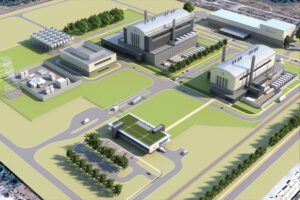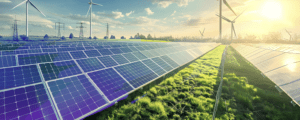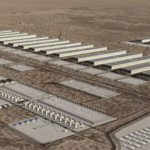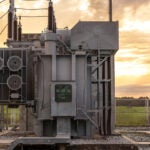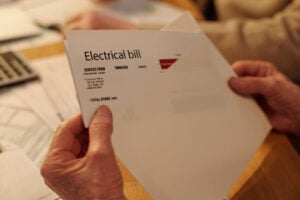
As Labor Day beckons, the hottest conversation topic isn’t a hit movie or summer pop anthem, but rather the widespread shock that ratepayers are seeing amidst unexpectedly high power bills.
While widely predicted in the spring to those in the industry, this development is already causing headaches for operators and serving as an unpleasant surprise to households already grappling with a slow job market and worried about rising grocery costs. Their concerns weren’t unfounded—a 2024 EY survey found that 75% of households cited affordability as the most important factor in their energy experience, while 65% of households were unable to handle even a 10% increase in their energy bills.
Yet, convergence of record-breaking heat, soaring demand for power, and an aging grid have exposed longstanding structural weaknesses in the energy system. While this scenario was forecast years ago, it’s now manifesting in the mailboxes of consumers around the country.
It’s Not Just About Data Centers
The reflexive response by some has blamed data centers, but this crisis is rooted in deeper, structural problems, including:
- Underbuilt Transmission. From 2010 to 2014, the U.S. added 1,700 miles of high-voltage lines per year. But between 2020 and 2023, that dropped to just 350 miles, according to a recent study from Grid Strategies.
- Climate-Related Capital Costs. From wildfires in California to hurricanes in Florida, utilities have faced relentless repair and hardening needs—costs that ultimately hit ratepayers—with another wildfire and hurricane season underway now.
- Global Supply Strain. Transmission components are now globally scarce. One Wood Mackenzie estimate stated that only 20% of U.S. utility infrastructure is made domestically. Given the global demand for electric infrastructure, both cost and wait time for equipment continue to be a challenge. This isn’t a short-term anomaly. It’s a systemic shift—and one that requires a coordinated, strategic response from the energy and tech sectors, working in close partnership with policymakers at every level.
The Strategic Stakes Are Growing
Granted, there are already participants from across the economy looking to alleviate the challenge of soaring demand and resulting cost. However, it would be a mistake to miss the emotional element of this problem. A power bill is one of the few remaining universal elements in daily life. Regardless of socioeconomic status, education level, religion, or location, everyone relates to an increase in energy costs. Studies show that electricity ranks just behind housing in terms of financial priorities.
If stakeholders in the current power crunch fail to demonstrate genuine empathy and flexibility, no amount of community relations playbooks will win back the support of the cities where they operate. Moreover, with 36 states holding gubernatorial elections and nine states holding elections for their utility regulatory board in 2026, power costs are sure to become a political hot button. Time is running out, and failure to address this issue will have profound effects on both the ability to deliver data center projects on time and budget. Thus, this isn’t a moment for short-term investments or focus-grouped talking points. It’s about demonstrating real capacity to listen and work toward solutions.
Three Strategic Imperatives
Companies that navigate this successfully won’t just manage public relations. They’ll build resilience by aligning operations, reputation, and policy positioning. That starts with:
- Controlling the Narrative. Waiting until the price spike or outage to explain your value is a losing strategy. Utilities and their partners should be visible now—on commitments to affordability, reliability, and community benefit. This may create some unpleasant exchanges in the immediate term, but being willing to face the music will go a long way.
- Grounding Growth in Public Value. Infrastructure investments and new developments must be seen as solving problems, not creating them. Frame every project in terms of how it solves the issues of cost, reliability, and long-term benefit.
- Bringing Solutions to Policymakers. The companies that shape future regulations will be the ones already offering practical ideas—on permitting, transmission, clean energy integration, and affordability.
Quick Fixes—but Clear Direction
There’s no immediate off-ramp from high prices. Flat demand through the 2010s created complacency. Now, we’re playing catch-up—amid record heat, volatile supply chains, and explosive digital growth.
For the energy and tech sectors, this isn’t someone else’s problem. The grid is being redefined in real time, and particularly in the immediate term, public trust will be as important as capital investment.
This Is a Communications Test—and a Leadership Opportunity
The technology and energy industries sit at the cusp of the most exciting times in recent history, and increasingly, one of the most fraught. Within 10 years, solutions such as geothermal, nuclear fusion, and carbon capture will provide the energy needed to fuel grand ambitions. Still, in the meantime, there’s a backlog of investment, both physical and relational, that must be laid in place.
Make no mistake: the grassroots backlash against energy demand and resulting cost poses an equal threat to the sector as a wildfire or hurricane. If companies dependent on new energy capacity, infrastructure, or investment don’t take these complaints seriously, they’ll find themselves once again assessing how to deal with the damage instead of being thankful they prioritized the communications, public affairs, and relationship investment made up front. The choice will soon be evident.
—Joe Brettell is partner, Strategic Engagement, with Prosody Consulting LLC.




